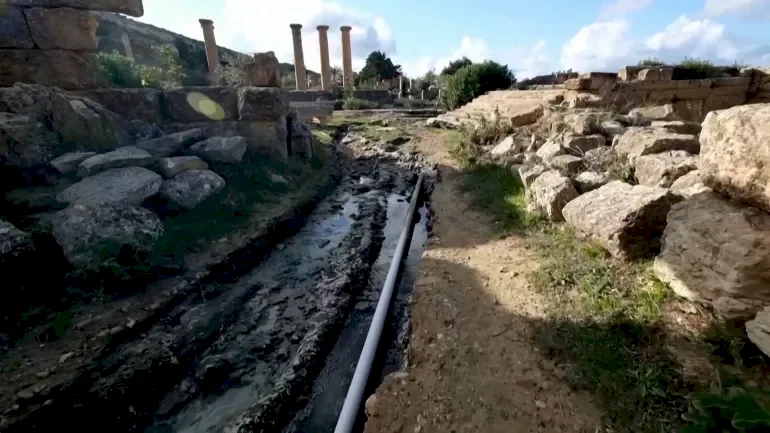
Announcement of the Discovery of an Archaeological Site in Libya
SadaNews - The director of the archaeological monitoring in Shahat stated that a team of researchers and workers from the restoration department in the archaeological monitoring in the northeastern city of Libya managed to discover a new archaeological site located underground last Wednesday.
Anis Hamed Boujaieb, the appointed director of the monitoring, explained that the discovered site is located within the archaeological area of Shahat, also known as Cyrene or Cirene, within its surrounding fence, and it covers an area of about ten square meters, marking a new discovery.
Boujaieb mentioned that the discovered site is a circular space containing semi-circular corridors leading inside and then returning to the same area.
Last week, the Shahat monitoring agency published photos of the site on its Facebook page, showing the research team diligently working on uncovering the new site.
While evaluating the site, Boujaieb reported that two bases were found on which stood feet of statues wearing Greek-style sandals, as well as pottery pieces and a set of jars.
Ancient Cyrene
The site of Cyrene is listed on the UNESCO World Heritage List and was a Greek colony dating back to the 7th century BC, which later became a Roman city.
The ancient city of Cyrene, located on the slopes of the Green Mountain, is far from the Mediterranean coast and is an integral part of Libya's long and multi-ethnic history.
The city was a crossroads of cultures and trade in Europe and North Africa, known for its extensive excavations and prominent scattered ruins. Cyrene is now known as the city of Shahat.
Boujaieb stated, "The nature of this site is still unclear; it has not yet been determined if it was a reservoir, a tomb, or a cache, but its location and the discoveries (the unearthed relics) suggest it to be from the Hellenistic or early Roman period." He added that the monitoring agency will form a specialized team to conduct excavation and documentation work at this site.
The Archaeological Context of the Discovery
The discovery came after the monitoring agency received a report from a faculty member at Omar Al-Mukhtar University, according to Boujaieb, who was wandering in the Shahat area and found a very small gap leading to a large open space underground.
Boujaieb described this discovery as "unique," adding that it is a virgin site as no excavations have been conducted there previously, neither by missions nor by the Department of Antiquities. He noted that the restoration and excavation work requires resources that are "not currently available."
He mentioned that after Hurricane Daniel struck the city of Derna and some other areas like Shahat and Sousa in the Green Mountain in September 2023, many sites were discovered, including channels in Wadi Street in the city of Derna and "a building likely to be an altar near the Temple of Demeter," with monitoring teams working at all these sites.
Libya is rich in archaeological sites, with five sites registered with UNESCO: the archaeological site of Shahat, the archaeological site of Sabratha, the archaeological site of Cyrene, the rock art sites of Tadrart Acacus, and the ancient city of Ghadames.
Libya was a destination for hundreds of thousands of tourists from around the world before the oil-producing country descended into chaos since 2011 after the fall of Muammar Gaddafi's regime in a popular uprising supported by NATO.
The country has since been divided between two rival administrations in the east and west competing for power, with ongoing efforts from the United Nations to reconcile the conflicting parties and bring an end to the chaos.

Brazil Seeks to Raise $10 Billion for Forest Protection Initiative

Announcement of the Discovery of an Archaeological Site in Libya

Decline in Coronavirus Vaccine Sales in the United States

Mistakes That Harm Hair

Climate Change Threatens the Civilization Cradle in Iraq

Egyptian artist Hamdi El-Wazir hospitalized

Numerous Benefits of Turmeric Coffee... Discover Them

